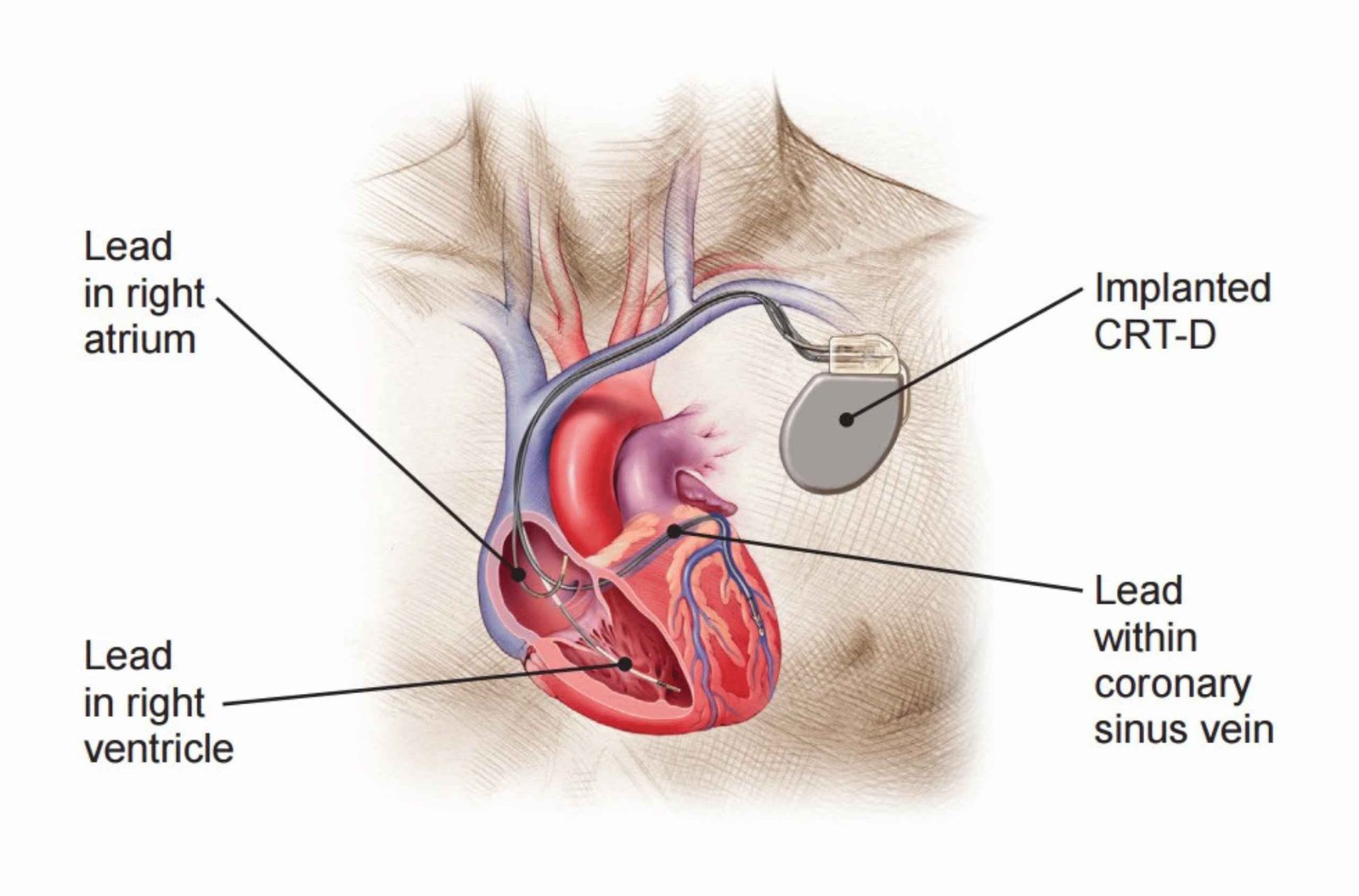
Cardiac Resynchronization Therapy Defibrillator (CRT-D) is an advanced medical device designed to improve heart function and prevent sudden cardiac death in patients with severe heart failure. This device combines the benefits of Cardiac Resynchronization Therapy (CRT) and an Implantable Cardioverter Defibrillator (ICD) to enhance heart pumping efficiency and provide life-saving shocks if a dangerous heart rhythm is detected.
A Cardiac Consultant is a physician with advanced training in cardiology, the branch of medicine dealing with the heart and circulatory system. They are skilled in diagnosing and treating conditions such as coronary artery disease, heart failure, arrhythmias, and congenital heart defects. Beyond treating existing conditions, they also focus on preventive measures to reduce the risk of heart disease.
CRT-D is typically recommended for patients who have:
These patients are at a higher risk of sudden cardiac arrest and can benefit from both the resynchronization and defibrillation capabilities of the CRT-D device.
The implantation of a CRT-D involves the following steps:
The entire procedure typically takes a few hours, and most patients can go home the next day.
CRT-D provides several significant benefits, including:
After the implantation, patients will need to attend regular follow-up appointments to monitor the device’s function and make any necessary adjustments. It is important to take certain precautions, such as:
A CRT-D device offers a dual approach to managing severe heart failure and preventing sudden cardiac death. By combining the benefits of resynchronization therapy and defibrillation, it provides a comprehensive solution to improve the quality of life and survival rates for patients with advanced heart failure. Under the expert guidance of healthcare professionals like Dr. Amit, CRT-D implantation can be a transformative treatment for those in need.
A CRT-D (Cardiac Resynchronization Therapy Defibrillator) is an advanced medical device that combines a pacemaker and a defibrillator. It helps manage heart failure by improving the coordination of the heart’s contractions and can deliver life-saving shocks if it detects a dangerous arrhythmia.
Candidates for a CRT-D typically have moderate to severe heart failure (NYHA class III or IV), a reduced ejection fraction (usually less than 35%), and evidence of ventricular dyssynchrony, where the heart’s ventricles do not contract simultaneously.
A CRT-D device has three leads that are placed in the heart. It sends electrical impulses to the heart muscles to improve the timing of the heart’s contractions, making the heart pump more efficiently. Additionally, it monitors for dangerous arrhythmias and delivers a shock to restore a normal heart rhythm if necessary.
The implantation procedure involves making a small incision near the collarbone, inserting leads through a vein into the heart, and placing the CRT-D device under the skin. The procedure is done under local anesthesia with sedation and usually takes a few hours. Most patients can go home the next day.
The procedure is performed under local anesthesia and sedation to minimize discomfort. You might feel some pressure during the procedure, and there may be some soreness at the incision site afterward, but significant pain is uncommon.
While CRT-D implantation is generally safe, potential risks include infection at the incision site, bleeding or bruising, lead displacement, and, rarely, device malfunction. Your healthcare provider will monitor you closely to manage any complications.
The battery life of a CRT-D device typically ranges from 5 to 7 years, depending on how often it needs to deliver therapy. Regular check-ups will help monitor the battery status, and a simple surgical procedure can replace the device when necessary.
After recovery, most patients can resume their normal activities. However, you should avoid strong electromagnetic fields, follow any activity restrictions advised by your healthcare provider, and attend regular follow-up appointments to ensure the device is functioning correctly.
Many newer CRT-D devices are MRI-compatible, but you should always inform your healthcare provider and the imaging center about your device before undergoing an MRI. They will take the necessary precautions to ensure your safety.
You will not feel the regular pacing of the CRT-D device. If the device delivers a shock to correct a dangerous arrhythmia, you might feel it as a sudden jolt or thump in your chest.
Regular follow-up appointments are essential to monitor the device’s function and make any necessary adjustments. Your healthcare provider will check the device settings, battery status, and overall heart function during these visits.
While most patients can return to their normal activities, you should avoid high-impact sports, activities that could result in trauma to the chest area, and strong magnetic fields. It’s also important to continue managing your heart failure with medications and lifestyle modifications as advised by your healthcare provider.